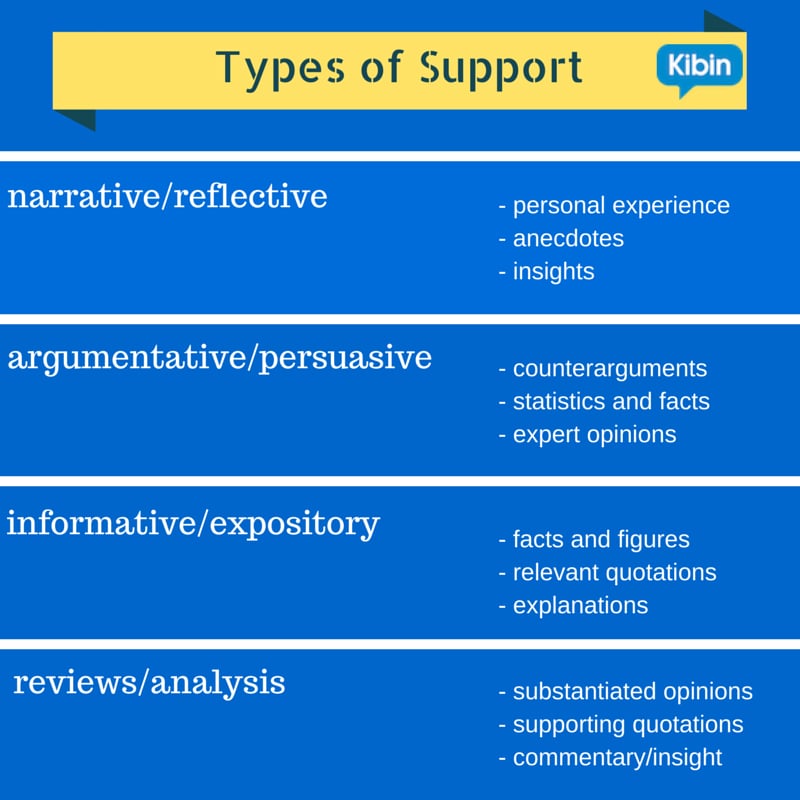Whenever you’re writing an essay for a class, to get into your dream school, or for some other reason besides “just for the heck of it,” you usually need to write a minimum number of words or pages.
And while there are probably topics you could write about forever — an ode to your pillow or your deep, unabashed love for nineties sitcoms, for instance — there will be times when you simply run out of things to say before you reach your target word count.

So what do you do when you feel as though you’ve squeezed out every last word you can say about your topic, but your essay falls short of your goal?
This post will help you learn how to make an essay longer without resorting to useless fluff, purple prose, or 6 silly things the reader will totally notice (so don’t even bother).
How to Make an Essay Longer: Before You Write
Don’t underestimate the value of planning ahead. When you’re staring down a hefty page requirement, there are a few things you can do before you ever start writing to set yourself up for success.
- Do lots of research. The more information you have about your topic from the get-go, the easier it is to write (and write, and write, and write some more).
- Create a thorough outline. Planning what you will write in advance helps you organize your ideas and spot weaknesses in your arguments and ideas that you can elaborate on. Plus, it helps you write more quickly. (Need some help? Check out these posts on the expository essay outline or 5-paragraph essay outline for strategies you can use for papers of any length).
- Broaden your topic (if necessary). Sometimes, after researching or thinking about your topic and creating an outline, you realize that you still don’t know enough about your topic to draft a complete essay. This doesn’t mean that your approach is wrong; sometimes the information simply isn’t there.
This is a good time to consider broadening the scope of your essay by…
…discussing a wider range of perspectives,
…examining a larger population,
…looking at a larger geographic area,
…considering a broader time span,
…etc.
And of course all of this planning works best when you start your essay well in advance of the deadline, so don’t procrastinate.
What happens if you use these strategies and still come up short?
How to Make an Essay Longer (the Obnoxious, Lazy Way)
Let me preface this section by acknowledging that you, dear reader, are a smart cookie. So I know that you would never resort to cheap padding strategies, right?
But just in case you’re tempted to quote like crazy or tweak the formatting to make an essay look longer and need a reminder of why that’s a bad idea, remember that it will be totally obvious (and super annoying) if you…
….increase the page margins.
….increase the font size (even if it’s just the periods — don’t!).
….choose an odd-looking font because it’s larger than average.
….add extra spaces after periods.
….add extra spaces between paragraphs.
….add long but ill-placed or irrelevant quotations to your essay.
People (ahem, your instructors) who read essays for a good chunk of the day are on to these tricks. In a stack of 20 or more essays, the one with the subtly larger font and and slightly wider margins will stick out!
Don’t believe me? Have a look at these two essays:
Adding a quarter inch to the margins and using a larger font does make the essay longer. But it creates a pretty obvious difference!
Furthermore if you turn your paper in electronically, your teacher might adjust the font/margin by default…then you’re totally busted, and your efforts were a total waste.
One more thing: don’t assume that an assignment with a required number of pages rather than words is a green light to go nuts with formatting.
This simply means that your instructor trusts that you are mature enough to hand in a paper with reasonable margins, a normal-sized font, and so forth.
Don’t abuse that trust!
Ultimately, the effort you put into adjusting the formatting or hunting for quotes could be better spent writing more content.
But as you will see in the next section, the kind of content you write matters.
How to Make an Essay Longer (and Ruin It in the Process)
Before you can make your essay longer the honest way — by adding more actual words — you need to know the difference between substance and, well, everything else.
Take fluff, for instance.
Fluff is awesome on chicks and bunnies, but it’s less awesome in writing. So what is fluff anyway?
Fluff is clutter, plain and simple. It’s writing that takes too many words to get to the point. And while it is a tempting means by which to lengthen your essay, it annoys your readers…and it’s easy to spot.
Fluff includes:
- Stating the obvious
- Saying rather than showing
- Redundancy/repeating yourself
- Using overly complex words/sentence structures
- Overusing words like “very,” “really,” “rather,” etc.
“Purple prose” is another kind of fluff. This refers to flowery, over-the-top writing that is way too heavy with adverbs and adjectives.
Let’s look at a fluffy, purple example from a narrative or personal statement:
“It was in the great, shining city of Philadelphia, Pennsylvania, that I instinctively drew my first breath.”
That’s a terribly dramatic and wordy way to say, “I was born in Philadelphia.”
Here’s another over-the-top example focused on a piece of literature. I’ll bold the fluff so you can follow along:
“The Great Gatsby is a very interesting novel by F. Scott Fitzgerald. The author of the book uses many symbols that are utilized to symbolize certain things. The mysterious green light on Daisy’s dock is a symbol that the author uses to show the reader something.This rather important symbol represents Gatsby’s hopes and dreams of the future. Scholar T. Smith also states that this symbol is important in the book because it “reflects Gatsby’s future ambitions.”
Well, that says a whole lot of nothing. It’s repetitive, it’s wordy, it contains an unnecessary quotation, and reading it is not unlike wading through mud. Look how much that idea can be condensed when I take out the fluff:
“In The Great Gatsby, F. Scott Fitzgerald includes a number of symbols, including the green light on Daisy’s dock that represents Gatsby’s hopes and dreams of the future.”
Much better.
Still not sure what constitutes fluff? Check out Stephanie Orges’ 47 words and phrases that slow your reader down for some great examples of fluffy constructions to avoid.
Also read How to Avoid Sticky Sentences and Be a Better Writer.
Now that you know how not to make your essay longer, let’s look at some legit strategies for bulking up your writing so that you end up with an essay that’s all killer, no filler.
How to Make an Essay Longer…and Better than Ever
There are plenty of ways to make an essay longer without sacrificing its readability or your reader’s sanity. Assuming that you already have your essay drafted, you can use one or more of the following strategies to generate real, substantial content.
1. Let someone else read your essay. Sure, you think that your essay is clear, persuasive, entertaining, and thorough, but sometimes we make silly leaps in logic that don’t work as well for our audience. Ask a trusted friend or a Kibin editor to look over your paper and make suggestions about where to add more details or support.
(Pro tip: For this reason, a lot of writers specifically request that I ask questions while I edit their papers. Don’t be afraid to ask!)
2. Look at your topic from a new angle. If you’re writing a persuasive or argumentative essay, consider counterarguments or alternate views. Addressing these arguments (and taking them down point by point) not only adds length to your essay, but it strengthens your own argument, too.
3. Think outside the box. The five-paragraph essay has its place when you are learning to compose an essay. Unless stated otherwise in an assignment, though, an essay can have 4 or 7 or 20 paragraphs! If you have a solid structure (a good outline helps), then don’t hem yourself in with arbitrary notions of what constitutes an essay.
4. Add more support. Depending on the type of essay you’re writing, “support” may include quotations and paraphrased information from research or anecdotes and examples from your own experience. Be sure that any support that you add actually strengthens the point you’re trying to make. Here are some of the most common types of support for different types of essays:
5. Walk away for a while. Sometimes, all you need to renew your inspiration is to step away from your writing for a bit. This is a time-tested cure for writer’s block and is an important reason to start drafting your essay early — not, say, the night before it’s due.
If you can spare the time, set your essay aside for a couple days. If you’re staring down a deadline, even an hour or two away from your writing will help you revisit it with a fresh perspective and — hopefully — some new ideas.
Further Reading
Armed with the pre-writing and revising strategies outlined in this post, you now know how to make an essay longer and stronger without resorting to fluff, filler, or formatting ‘solutions’ that only waste your time and frustrate your reader.
If you’re new to writing essays longer than a few pages, check out Shawn Doyle’s post The Five-Paragraph Fix — How to Write Longer Essays for advice on tackling longer essays and why writing ten pages can eventually become easier than writing just 2.
Also, read these tips for writing longer papers from Hamilton College. This resource provides some great advice for organizing, researching, drafting and revising long essays and research papers so you don’t get stumped in the first place.
Happy writing!


